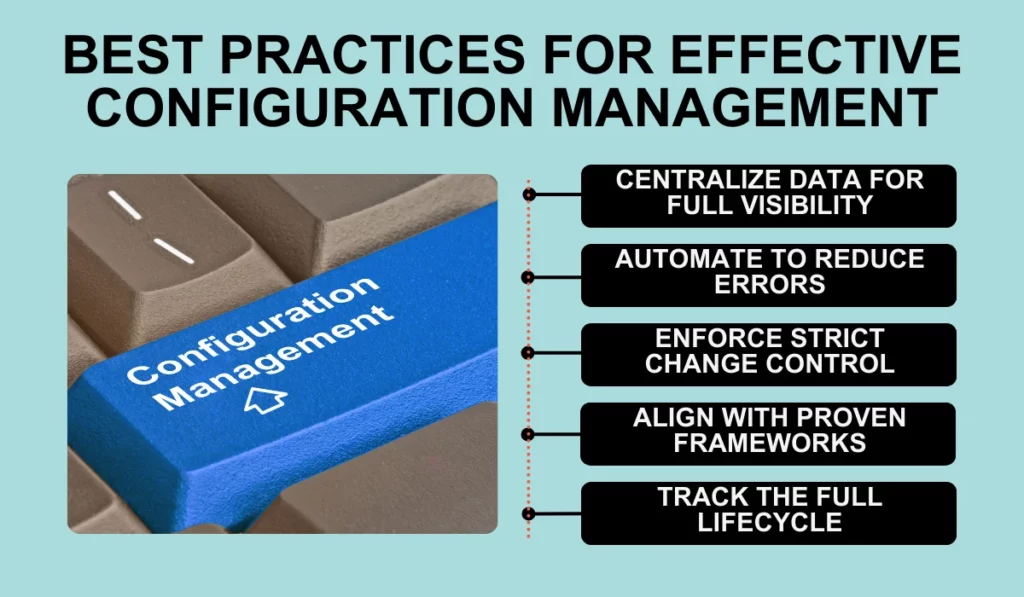CybersecurityManaged Service Provider
What Are Firewalls and Why Should You Upgrade Them?
Joseph Sena

Small businesses lacking a configuration management plan often struggle with slow, error-prone manual audits that are nearly impossible to scale—jeopardizing security, performance, and compliance. Is your organization ready to tackle that risk?
Without precise configuration control, you open the door to downtime, security gaps, and costly inefficiencies. A structured configuration management process keeps your IT environment stable, automated, and compliant.
This guide explains how configuration management improves system reliability, streamlines change management and safeguards critical data.
Think of configuration management as the blueprint for your IT infrastructure—without it, every change is a gamble. Just as architects need precise plans to ensure structural integrity, IT teams require a framework to maintain system stability, security, and compliance.
Configuration management documents, tracks, and controls every system, application, and infrastructure component—eliminating security gaps, ad-hoc changes, and compliance failures. Establishing a baseline configuration ensures every modification is reviewed, approved, and logged, preventing disruptions and vulnerabilities.
With a configuration management system (CMS) or CMDB, your team gains full visibility and control, ensuring seamless troubleshooting and consistency across your IT infrastructure.
A consistent baseline eliminates guesswork and ensures your IT environment runs smoothly. When every configuration item is documented and tracked, you avoid unexpected failures, system conflicts, and disruptions that impact critical workloads.
Unauthorized changes create security gaps. Configuration control locks down your systems, preventing unapproved modifications that could lead to breaches. Aligning with ITIL best practices demonstrates to regulators and stakeholders that your organization maintains compliance with industry standards.
When something goes wrong, knowing exactly what changed and when saves time. With a version control system and a CMDB, you can pinpoint and resolve issues faster, reducing downtime and eliminating guesswork.
Manual updates and patching drain time and resources. Establishing structured configuration management processes streamlines updates and reduces repetitive tasks, enabling your team to focus on higher-impact priorities.
Configuration management keeps your IT environment stable, secure, and optimized—without chaos.
A structured configuration management process ensures every asset is tracked, controlled, and validated—preventing inconsistencies and security gaps.
First, every asset’s baseline configuration is recorded in a CMDB, ensuring visibility and preventing misconfigurations. This central repository ensures full visibility and prevents misconfigurations from derailing operations.
Every change request must go through structured change management, ensuring approvals and documentation before implementation. This prevents unauthorized modifications that could disrupt system performance or security.
Regular configuration audits confirm that documented settings match real-world configurations. Regular audits and structured reviews continuously identify deviations, ensuring real-time compliance and a complete audit trail.
With these steps in place, configuration management keeps your systems secure, consistent, and thoroughly documented.

A disorganized IT environment leads to downtime, security risks, and compliance failures. A proactive configuration management strategy ensures stability by centralizing data, automating processes, and enforcing strict change control.
A CMDB serves as a single source of truth, eliminating inconsistencies and making troubleshooting faster. Without it, tracking assets and changes becomes a guessing game.
Manual updates lead to mistakes and wasted time. Implement structured processes to manage updates and patches, reducing manual errors and improving consistency across your IT environment.
Unapproved changes cause system failures and security gaps. A structured change request process prevents disruptions and ensures compliance with internal policies.
Following ITIL best practices ensures configurations remain structured, secure, and compliant, reducing audit risks and improving governance.
Every asset must be managed from deployment to decommissioning to prevent security gaps and inefficiencies. Without a plan, outdated systems become vulnerabilities.
With the right approach, configuration management keeps your IT environment stable, secure, and always audit-ready.
At Parachute, we help organizations take control of their IT environments with structured configuration tracking, strict change control, and real-time compliance enforcement. Our solutions ensure every system is documented, every modification is approved, and every audit trail is intact—minimizing risk and maximizing operational efficiency.
With our expertise in configuration management, you gain:
Don’t wait for a misconfiguration to cause downtime or a compliance failure. Contact Parachute today to take control of your IT infrastructure and ensure long-term stability.